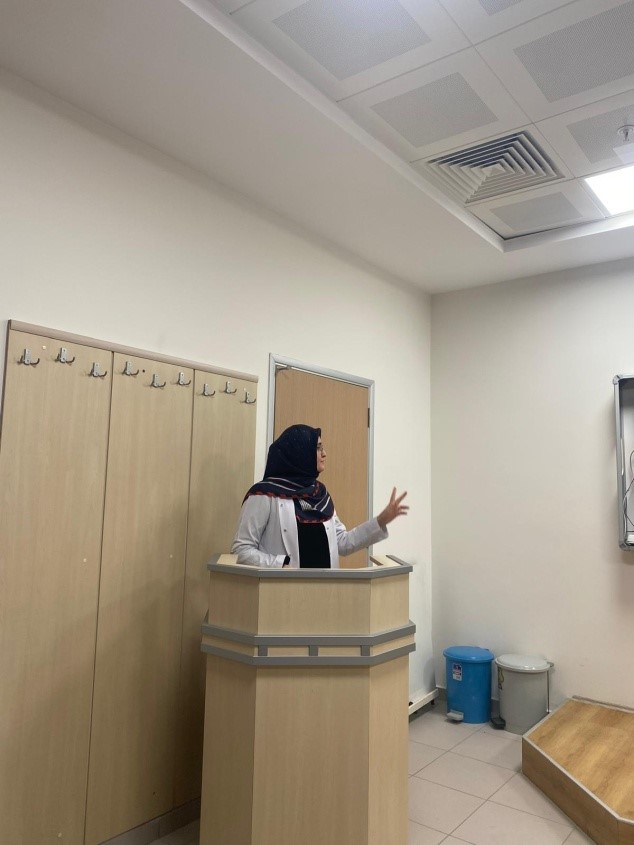
Seminar on Blood Gas Analysis

| Date | 05.06.2024 |
| Department | School of Medicine |
| SDG |   |
• Blood gas analysis is a valuable laboratory application that provides information about the patient's metabolic and respiratory physiology. Partial pressures of physiologically active gases (oxygen and carbon dioxide), pH and hemoglobin oxygen saturation are measured in the blood.
• Unlike routine laboratory tests, blood gas analyzes are performed on patients with critical or acute pathology and generally in intensive care units.
• While all other routine analyzes are performed on a venous blood sample, blood gas analyzes are performed on an arterial whole blood sample as the gold standard. However, in recent years, venous whole blood samples have also taken their place in the guidelines.
• Following sampling using a plastic or glass syringe, blood gas analysis should be performed as soon as possible, and waiting for the sample should be avoided as much as possible. Plastic syringes have some disadvantages compared to glass syringes. While glass syringes have a barrier that is impermeable to gases, plastic ones are permeable to gases. Some studies have shown that there is a rapid increase in pO2 pressure in blood samples by keeping plastic syringes on ice.
• Adding 10% venous blood to the arterial sample causes a 25% decrease in the pO2 level. The probability is higher, especially when harvesting from the femoral artery. If the results do not match, there is suspected contamination and pulse oximetry can be used to assist in diagnosis.
• If pO2 monitoring is important, the pneumatic system is not recommended.
• In samples kept at room temperature with gas-impermeable syringes, on average; A decrease of 2-4 mmHg/hour in pO2, an increase of approximately 1 mmHg/hour in pCO2 and a decrease of 0.02 to 0.03 units/hour in pH are observed.
• Arterial, venous and capillary samples can be taken.
• Capillary sample gives limited information regarding oxygenation.
• It is the preferred sample type, especially in pediatric and neonatal patients.
• For capillaries, earlobe, fingertip, big toe and heel can be used.
• Venous sample is not recommended for assessing oxygenation.
• Arterial sample is the gold standard in Blood gas evaluation.
• It is preferred because it shows respiratory function and is not affected by tissue metabolism.
• Radial, brachial, femoral and ulnar are the preferred order.
• If there is not enough collateral in the area to be sampled, if there is trauma to the underlying bone, if there is coagulopathy, or if there is an arteriovenous fistula for dialysis, taking arterial blood gas from that area is contraindicated.
• The sample should not come into contact with air, the syringe cap should be closed immediately, attention should be paid to hemolysis, and it should be turned upside down to ensure proper anticoagulant mixing.
• Calibration of blood gas analyzers depends on the manufacturer. It normally uses two sets of gas mixtures for CO2 and O2. One of the gas mixtures does not contain O2 and sets the zero point of the O2 electrode, it contains 5% CO2 and sets the CO2 electrode. The other gas mixture is used as analytical control. Many devices automatically perform calibration at certain intervals.
• Reasons for unacceptable results in blood gases external quality control reports:
• Analytical error
• Unit error (Especially in calcium, glucose, lactate tests)
• Incorrect spelling
• Other result (internal quality control or patient result)
• Wrong method selection
• Failure to follow manufacturer's instructions
• Failure to analyze the quality control sample at the specified temperature
• Failure to control the device within the time specified by the manufacturer after the bulb is broken.